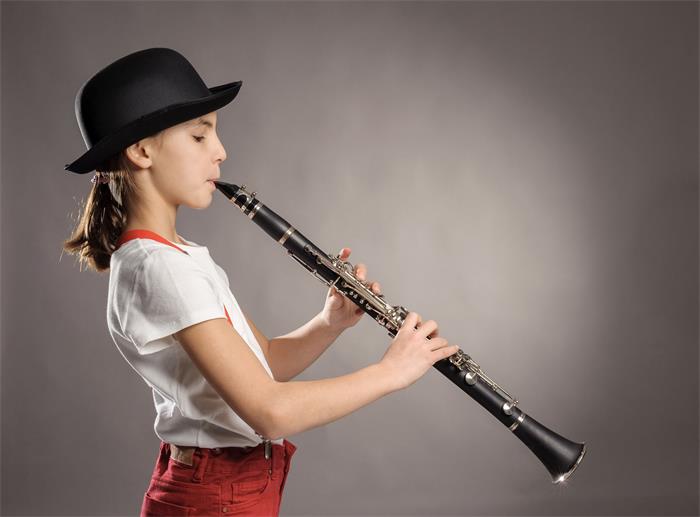The clarinet is a woodwind instrument that has captivated audiences for centuries with its rich and versatile sound. Aspiring clarinetists often wonder about the physical demands of playing this instrument, particularly when it comes to lung capacity and breath control. The question “Do you need good lungs to play the clarinet?” is a common one. In this article, we will explore the importance of lung capacity, breath control, and overall respiratory health in playing the clarinet. We’ll also discuss techniques to improve these aspects, ensuring that players of all levels can achieve their best performance.
Understanding the Clarinet
The Clarinet Family
The clarinet belongs to the woodwind family and is known for its single reed and cylindrical bore. The most common type is the B-flat clarinet, but there are other variations, including the A clarinet, bass clarinet, and E-flat clarinet. Each type has its unique sound and role in various musical settings.
Sound Production
Sound on the clarinet is produced by blowing air through the mouthpiece, which vibrates the reed. This vibration is transferred to the body of the instrument, creating sound. The player’s control over the air stream, embouchure (mouth position), and finger placement on the keys determine the pitch and quality of the sound produced.
The Role of Lungs in Clarinet Playing
Breath Control
Breath control is crucial for clarinetists. It involves regulating the flow of air to maintain a steady and controlled sound. Good breath control allows for smooth transitions between notes, dynamic range (soft and loud playing), and extended phrases without breaks.
Lung Capacity
Lung capacity refers to the amount of air the lungs can hold. While having a large lung capacity can be beneficial, it is not the sole determinant of success in playing the clarinet. More important is how effectively a player uses their available lung capacity through proper technique and training.
Techniques to Improve Lung Capacity and Breath Control
Breathing Exercises
Practicing breathing exercises can significantly improve lung capacity and breath control. Here are some effective exercises for clarinetists:
– Diaphragmatic Breathing: Focus on using the diaphragm, rather than the chest, to draw in air. This technique allows for deeper and more efficient breaths.
– Long Tones: Play long, sustained notes, gradually increasing their duration. This exercise helps in controlling the airflow and building lung strength.
– Phrasing Practice: Break down musical passages into phrases and practice playing them in a single breath. Gradually extend the length of the phrases as your breath control improves.
Physical Fitness
Overall physical fitness contributes to better respiratory health. Cardiovascular exercises, such as running, swimming, and cycling, can enhance lung capacity and stamina. Maintaining a healthy lifestyle, including proper diet and hydration, also supports lung function.
See Also: Does Playing the Clarinet Make Your Lungs Stronger? Here’s the Truth
Common Misconceptions
Myth: Only People with Large Lungs Can Play the Clarinet
While having larger lungs can be an advantage, it is not a prerequisite for playing the clarinet. Many successful clarinetists have average or even below-average lung capacity. The key lies in efficient use of breath through proper technique and practice.
Myth: Breath Control is Only About Lung Capacity
Breath control involves more than just lung capacity. It includes breath support (using the diaphragm and other muscles to control airflow), embouchure control, and the ability to manage breath pressure. Clarinetists must develop all these aspects to achieve optimal performance.
The Importance of Proper Technique
Embouchure
The embouchure, or the way a player shapes their mouth around the mouthpiece, is vital for sound production and control. A proper embouchure ensures that the reed vibrates correctly and that the airflow is directed efficiently through the instrument.
Posture
Good posture is essential for efficient breathing and playing. Clarinetists should sit or stand with a straight back, relaxed shoulders, and an open chest to allow for unrestricted breathing. Holding the clarinet at the correct angle also facilitates better airflow and control.
Finger Technique
While not directly related to lung capacity, finger technique affects overall performance. Efficient finger movement reduces tension and allows for smoother transitions between notes, which can indirectly impact breath control by reducing the effort required to play.
Practicing with Purpose
Structured Practice Sessions
Effective practice is structured and goal-oriented. Clarinetists should divide their practice time into sections, focusing on different aspects such as scales, arpeggios, long tones, and musical pieces. This approach ensures a balanced development of technical skills and breath control.
Regular Breaks
Taking regular breaks during practice sessions prevents fatigue and maintains focus. Overworking the lungs can lead to strain and decreased performance quality. Short, frequent breaks allow for recovery and sustained practice efficiency.
Advanced Techniques for Breath Control
Circular Breathing
Circular breathing is an advanced technique that allows clarinetists to sustain notes for an extended period without taking a traditional breath. It involves simultaneously breathing in through the nose while pushing air out through the mouth using stored air in the cheeks. This technique requires significant practice and coordination but can be useful in certain musical contexts.
Breath Support in Fast Passages
Fast passages require rapid and controlled breaths to maintain consistency. Practicing these passages slowly, focusing on breath management, helps in developing the necessary coordination and breath control for faster tempos.
Conclusion
In conclusion, while having good lungs can be advantageous, it is not a necessity for playing the clarinet. Proper breath control, efficient use of lung capacity, and overall respiratory health are more critical factors. By practicing breathing exercises, maintaining good physical fitness, and focusing on proper technique, clarinetists can overcome limitations and achieve their musical goals. The journey to mastering the clarinet is a combination of dedication, practice, and a deep understanding of the instrument’s demands. Whether you have large or small lungs, with the right approach, you can excel in playing the clarinet and enjoy the rich, expressive sound it offers.


